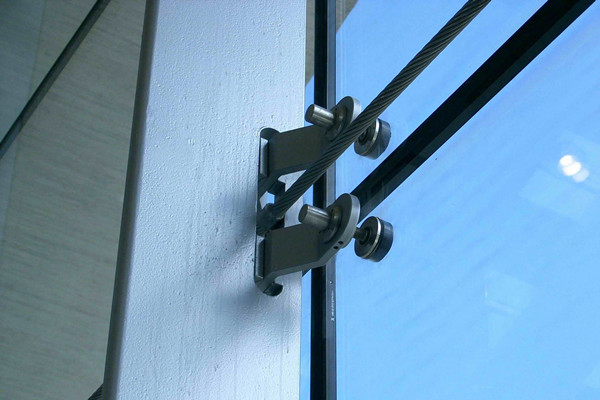A cable-supported glass curtain wall is a type of architectural façade system that uses tensioned cables to support the weight of large glass panels. It is a modern and visually appealing design solution commonly used in high-rise buildings and structures.
The curtain wall system typically consists of a network of horizontal and vertical tensioned cables that are anchored to the building structure. These cables act as primary load-bearing elements, carrying the weight of the glass panels and transmitting it to the building’s framework.
The glass panels used in cable-supported curtain walls are usually large and can span multiple floors. The panels are attached to the cables using point fittings or spider fittings, which secure the glass in place while allowing flexibility for movement due to wind loads and thermal expansion.
The main advantages of cable-supported glass curtain walls include:
- Aesthetics: The extensive use of glass creates a sleek and transparent appearance, providing unobstructed views and allowing natural light to enter the building.
- Structural Efficiency: The tensioned cables distribute the load evenly, reducing the need for additional supporting elements and allowing for larger glass panels. This results in a lighter and more efficient structural system.
- Flexibility: The cable-supported system allows for some movement and flexibility, accommodating wind loads and thermal expansion without compromising the structural integrity.
- Energy Efficiency: The use of large glass panels promotes natural daylighting, reducing the need for artificial lighting and improving energy efficiency.
- Customization: Cable-supported glass curtain walls offer a range of design possibilities, allowing architects to create unique and striking building exteriors.
It is important to note that cable-supported glass curtain walls require careful engineering and installation to ensure structural stability and safety. Qualified professionals with expertise in façade design and structural engineering are typically involved in the design and implementation of such systems.


